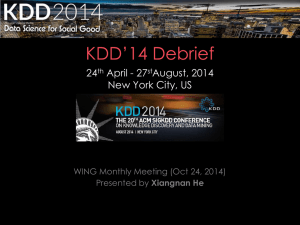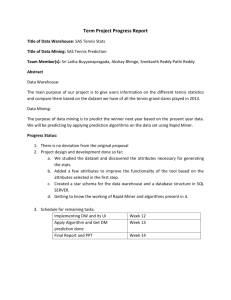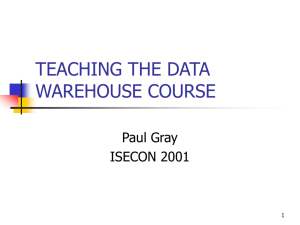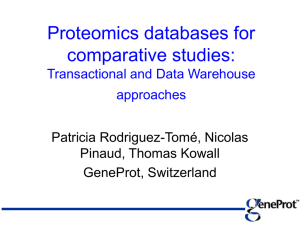Assignment 1
advertisement
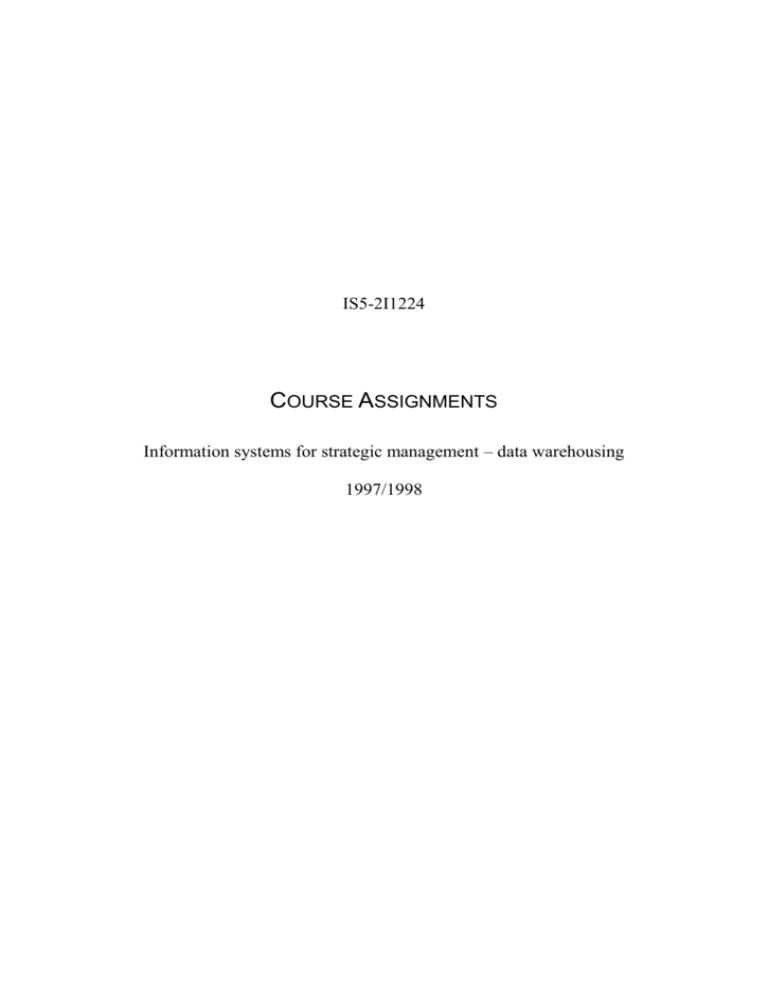
IS5-2I1224 COURSE ASSIGNMENTS Information systems for strategic management – data warehousing 1997/1998 DW course assignments ASSIGNMENT 1 Assignment description * 6-7 written pages per group, to be handed in at the seminar. * Each group present their paper * All groups engage in active discussion after the presentations Reading requirements - Kimball - Course documentation - Course documentation Introduction and pp 1-11, Chapter 1. Section 6, Article 1. Section 1, all articles. Task You are a consultant who has performed a ”problem analysis” of a company as regards their decision-making and data utilisation capabilities. To your dismay, the analysis reveals that the company represents a ”worst case scenario” in that it has nearly all the undesirable characteristics you could possibly imagine. Part A Based on the course literature and lecture material list these problems, placing special emphasis on the categories below. the nature of the decision situations faced by the organisation the decision-making culture in the organisation the systems environment in the organisation the availability and quality of data in the organisation Part B Out of the list of problems pick what you consider to be the 10 most important, rank them in order of importance and motivate why you believe them to be so important Part C Refer back to your original, exhaustive list of problems and identify those that you believe can be alleviated, or partially solved, by the introduction of a data warehouse in the organisation. Specify how you believe the data warehouse can be used to tackle these problems. Part D Compare the prioritised list of problems with the list of problems that you believe a data warehouse has relevance to. Explain how you believe those problems that are on the prioritised list, but not on the list of problems for which the data warehouse has relevance, can be solved. ASSIGNMENT 2 Assignment description * 5-6 pages, to be submitted at the seminar by all groups. * Two groups per task topic. * One group presents their paper, the other comments it and gives constructive criticism. * Both groups actively discuss the topic at the seminar Reading requirements - Kimball - Course documentation - Course documentation pp 11-19, Chapter 1. Section 2, all articles Section 3, all articles Task 1 On the basis of the article 1 and article 2 in section 2, give a thorough explanation of the process of Knowledge Discovery in Databases (KDD). Explain the role of data in this process and discuss how the various tasks utilise and transform the available data. Explain why the KDD process is referred to as a ”human centred” process and discuss the role of background and domain knowledge in the KDD process’ constituent tasks. Task 2 Explain the flow of work in data mining and discuss the use of models in the various data mining tasks. Explain how data mining fits into the KDD process described in article 1, section 2. On the basis of what you have learnt on data warehouses, explain how you believe a data warehouse could support data mining. Task 3 Explain the links between the 4 enterprise data models discussed in Codd’s article (Article 2, section 3, pp13, 14) and the rational model of decision making. Discuss the relevance of each of these models to a decision-maker engaged in rational decision making. Speculate on how an OLAP tool having Codd’s 12 requisite characteristics article (Article 2, section 3, pp18-25) could help an analyst engaged in the KDD (including data mining) process. Make specific reference to the tasks in the process that you believe OLAP tools can support. ASSIGNMENT 3 (Still under construction) Describe a number of major themes in the design of dimensional data warehouses. Three groupings of themes, one group presents the next opposes. ASSIGNMENT 4 (Still under construction) Describe a project plan for the launch of a data warehouse. The plan should include the following. Scheduling of activities Procurement of resources and actors Releases ASSIGNMENT 5 (Still under construction) Describe a dimensional design for the data warehouse. Also describe how to contend with changing dimensions, aggregations, etc. Have a look at copy management issues and several other major issues.



